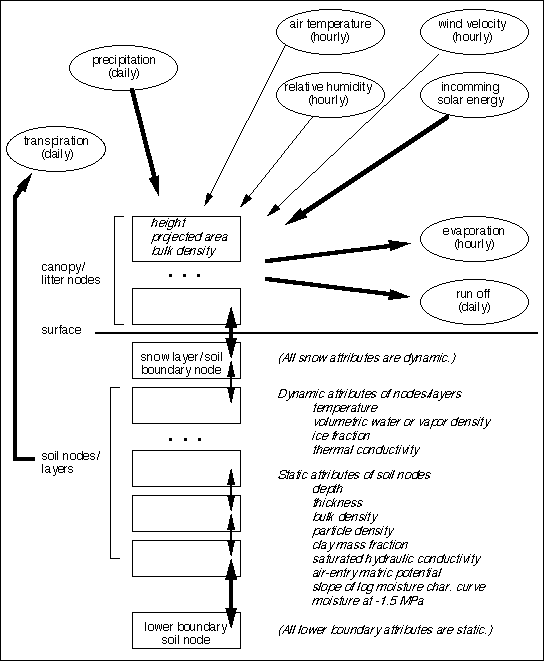
 The BOREAS Information System
The BOREAS Information System
FroST (Frozen Soil Temperatures) is a simulation model of soil properties which produces estimates of water content, matric potential, temperature, and ice content within each soil horizon. FroST was developed from the Residue model of Bidlake et al. (1992) which couples surface residue to the soil-atmosphere system, and uses network analysis to describe heat and moisture transfer, and phase changes in water. Short-wave and long-wave radiative transfer, changes in energy status, rainfall interception, infiltration, redistribution, evaporation, and drainage are all accounted for. Climate input requirements include global short-wave radiation, air temperatures, average wind speed, and precipitation. General site, canopy, and soil characteristics for individual horizons are also needed. Enhancements to the Residue model to produce FroST included algorithms for calculating surface runoff, transpiration, Penman demand, and a simple snow model. In FroST, surface residue from the Residue model is configured to reflect above ground characteristics of forested sites. Snow is simulated by changing the characteristics of the surface soil node from soil characteristics to snow characteristics. Precipitation increases the node's thickness, and a simple melt factor is used to melt off the snow. Once the snow has melted off, node characteristics are reset to that soil

